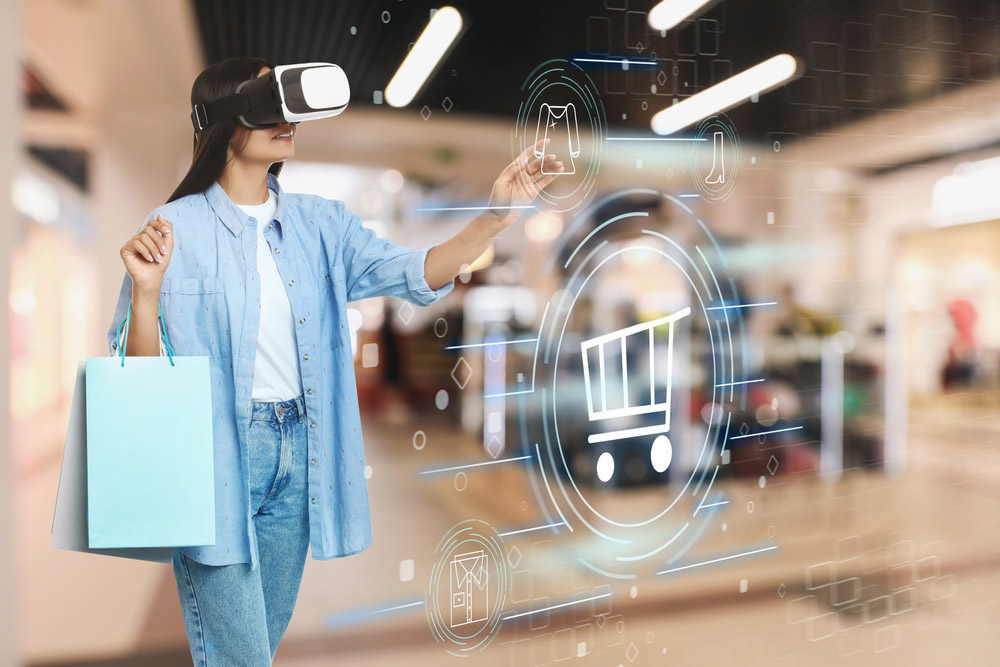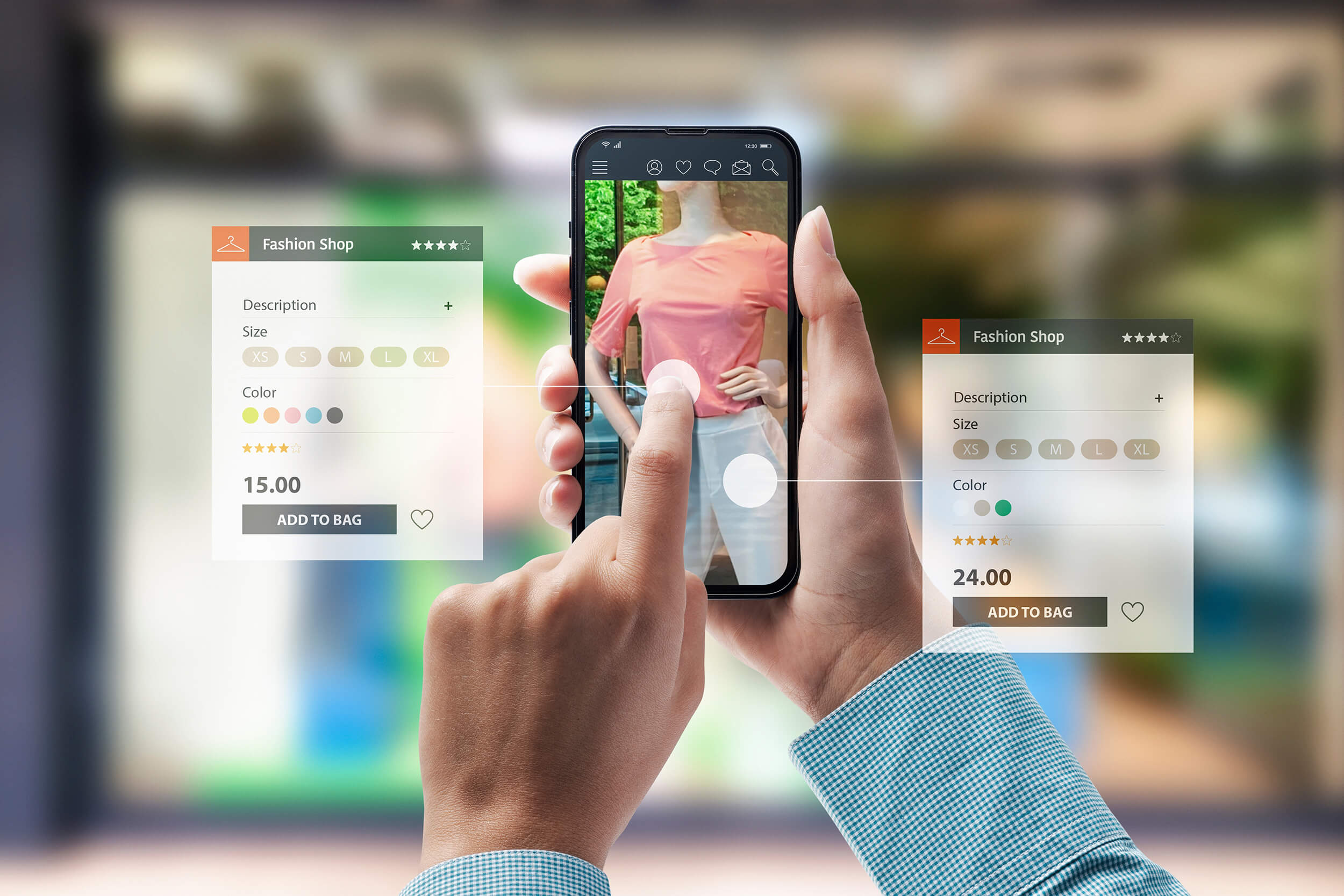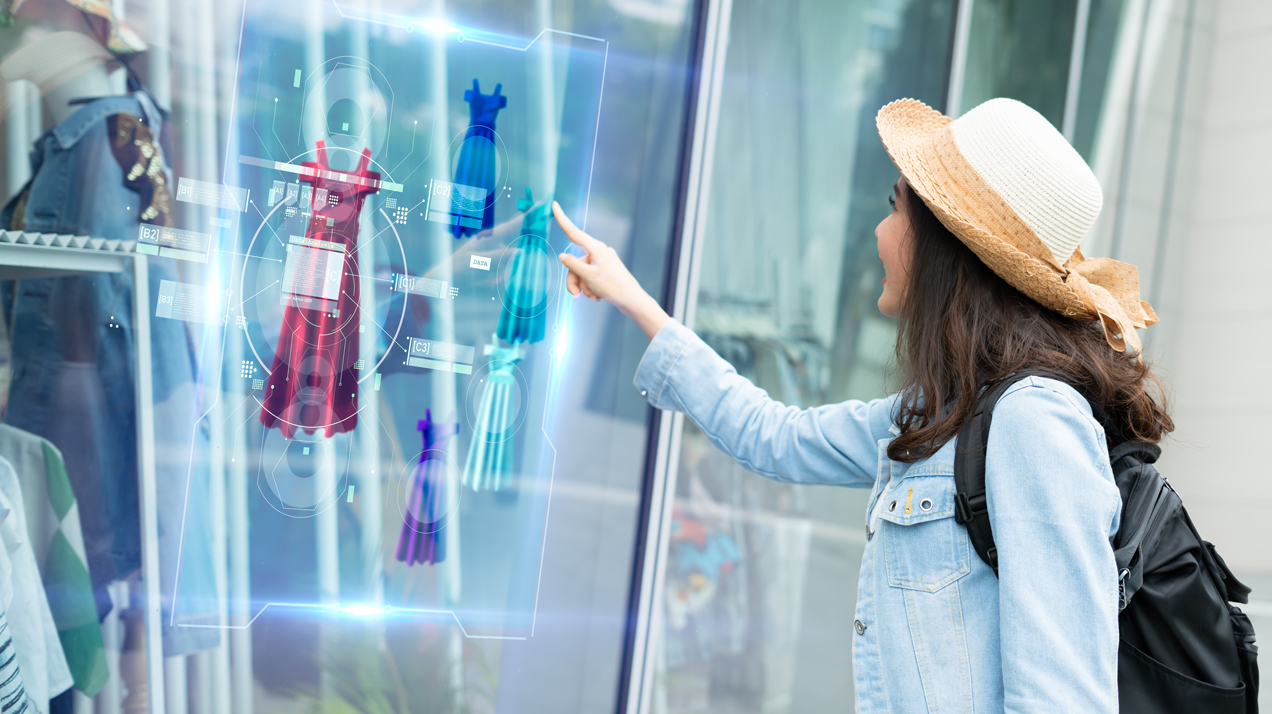

Introduction
Imagine pointing your phone at a piece of furniture and seeing it appear in your living room before you buy. Or tapping an app to virtually try on shoes or makeup and know exactly how they look. This is no longer science fiction. Augmented reality shopping is changing the way we shop online and in stores. It blends digital images with the real world, letting customers test products before purchase. As more retailers adopt AR technology, the “try before you buy” experience is going mainstream. This shift boosts shopper confidence, cuts return rates, and makes shopping more fun. This article explores the rise of AR shopping, how it works, key benefits, and tips for businesses and consumers. We’ll explain the tools driving this trend and share a table comparing top AR shopping solutions. By the end, you’ll see how augmented reality shopping is set to reshape retail in 2025 and beyond.
What Is Augmented Reality Shopping?
Definition and Core Concept
Augmented reality shopping uses AR to overlay virtual products onto real-world views. A shopper points a smartphone or tablet camera at a space or their own image. The app then places a 3D model of the item in that view. This technology differs from virtual reality, which creates a fully digital environment. AR enhances reality instead of replacing it. In retail, AR shopping apps let users see how furniture fits in a room or how clothes fit on their bodies. The result is an interactive try-on experience that mimics in-store testing.
How AR Works in Shopping
Most AR shopping tools use computer vision and depth-sensing. Computer vision analyzes the camera feed to detect surfaces and human features. Depth sensors or LiDAR scanners map distances to correctly place virtual objects in space. The app then renders a realistic 3D image in real time. Some solutions rely on marker-based AR, where a printed code triggers the experience. Others use markerless AR, which scans any flat surface. Advances in mobile processing power and cloud computing make these experiences fast and accurate.
Why “Try Before You Buy” Matters
Reducing Purchase Doubt
Buying online often comes with uncertainty. Customers worry about fit, color, or style. This doubt leads to abandoned carts and high return rates. AR shopping reduces these worries by letting users see products in context. When a shopper can test virtual items, they feel more confident that the product will meet their expectations.
Cutting Return Costs
Returns cost retailers billions each year in logistics and restocking fees. Virtual try-ons cut return rates by ensuring shoppers make choices they will keep. Some studies show AR-powered product views can lower return rates by up to 30 percent. This saves money for businesses and reduces carbon emissions from shipping.
Improving Engagement
AR features make shopping more interactive and memorable. Gamified try-on experiences increase time spent on apps and drive repeat visits. Retailers report that AR promotions lead to higher conversion rates and larger average order values. As shoppers share their AR images on social media, brands gain free exposure and word-of-mouth marketing.
Key Technologies Behind AR Shopping

Computer Vision
Computer vision algorithms detect and track real-world features. They identify floors, walls, and user faces to anchor virtual products correctly. Modern AI-driven vision models run on mobile devices, offering real-time performance without cloud lag.
3D Modeling and Rendering
Creating lifelike 3D models requires accurate textures, lighting, and shading. Retailers often scan real products with high-resolution cameras and lasers. Advanced rendering engines then simulate materials like fabric, metal, and glass. These details help virtual items look convincing in any environment.
Depth Sensing and LiDAR
Depth sensors measure distances between the camera and objects. Many smartphones now include LiDAR scanners that map spaces with centimeter accuracy. This data ensures virtual objects maintain correct scale and perspective, avoiding awkward floating or clipping.
Cloud Computing and Edge Processing
Complex AR tasks benefit from cloud computing. Large 3D assets and AI models can run on remote servers, with results streamed to the device. Edge processing, where some computing happens on the device itself, reduces latency and improves privacy. A hybrid approach balances speed, power use, and data security.
Barriers to Wider Adoption
Device Compatibility
Although smartphone penetration is high, not all users have LiDAR or the latest chipsets. Brands must serve fallback 2-D previews to avoid alienating customers.
Asset Creation Costs
Quality 3-D scans require skilled teams. For large catalogs, this investment can be steep. AI auto-mesh tools promise relief but still need manual quality checks.
Bandwidth Limits
High-fidelity models can exceed 10 MB. Optimizing compression and enabling progressive loading keep slow connections from stalling sessions.
Leading AR Shopping Apps and Platforms
| Platform | Specialty | Key Feature | Pricing Model |
|---|---|---|---|
| Shopify AR | Ecommerce stores | In-app 3D product viewer | Subscription add-on |
| IKEA Place | Furniture | Room-scale furniture placement | Free |
| Sephora Virtual Artist | Beauty | Virtual makeup try-on | Free |
| Warby Parker | Eyewear | Face-tracking frame fit | Free |
| ARitize™ | Customizable AR solutions | Markerless AR and analytics | Custom pricing |
This table highlights popular AR platforms. Each focuses on specific retail niches and offers unique features. Pricing varies from free consumer apps to enterprise-level solutions.
Benefits for Retailers and Consumers

For Retailers
Retailers gain deeper insights into buyer behavior. AR analytics track how long users view products, which colors they try, and how they interact with 3D models. This data guides inventory choices and marketing strategies. AR also differentiates brands, attracting tech-savvy shoppers and media attention.
For Consumers
Shoppers enjoy a blend of online convenience and in-store realism. AR let them test items without leaving home. This is especially helpful for makeup, eyeglasses, and home décor. Mobile AR apps work anytime, anywhere, fitting busy lifestyles.
Challenges and Solutions
Technical Barriers
Not all shoppers have the latest smartphones with LiDAR. Some experience lag or crashes on older devices. To address this, developers optimize apps for a range of hardware. Lightweight 3D models and progressive loading techniques ensure broad compatibility.
User Adoption
Some shoppers hesitate to use AR due to lack of awareness or perceived complexity. Retailers can add simple AR prompts on product pages and email campaigns. Short tutorial overlays within apps guide first-time users and highlight try-on perks.
Content Creation Costs
High-quality 3D modeling and scanning can be expensive. Retailers can start small with best-selling items and expand over time. Partnerships with AR content providers and using photogrammetry tools reduce costs. Open-source 3D asset libraries also help.
Privacy Concerns
AR apps often access the camera and scan personal spaces or faces. Clear privacy policies and on-device processing build shopper trust. Companies should request minimal permissions and explain data use in simple terms.
Tips for Implementing AR Shopping
Start with Key Products
Focus on high-return or high-consideration items like furniture, fashion, and beauty. A strong AR experience for these categories delivers immediate impact.
Integrate AR into the User Journey
Embed AR try-ons directly on product pages and in mobile apps. Use clear calls to action like “Try in Your Room” or “See How It Fits.” Ensure a smooth switch between product images and AR view.
Promote AR Features
Highlight AR availability in marketing emails, social ads, and in-store signage. Offer discounts or rewards for first-time AR users to drive trial and word-of-mouth.
Monitor Metrics
Track AR engagement rates, session lengths, conversion lifts, and return reductions. Use these insights to refine AR features and expand to more products.
Future Trends in AR Shopping

Integration with Virtual Try-On Mirrors
Stores will install AR mirrors that overlay virtual clothes or accessories on shoppers in real time. These mirrors use body tracking and 3D garment models for instant fitting-room-free shopping.
Social Commerce Enhancements
Shoppers will share AR try-on sessions directly to social platforms. Live streaming with AR filters will let influencers test products with viewers in real time.
AI-Driven Personalization
By combining AR with AI, apps will suggest products based on face shape, home décor style, or past purchase history. Virtual stylists powered by AI will guide shoppers through the AR experience.
AR-Powered Brick-and-Mortar Stores
Physical stores will use AR kiosks and in-store navigation apps. Shoppers can scan shelves to see full product details and virtual demos, blending digital and physical retail.
Conclusion
Augmented reality shopping brings the “try before you buy” promise to life. By overlaying virtual items into our real world, AR shopping lifts online retail to a more confident, engaging, and efficient experience. Retailers reduce returns and gain valuable customer insights, while shoppers enjoy the convenience of virtual try-ons from home. We explored the technology behind AR shopping, key platforms, benefits, challenges, and future trends. As AR tools become more accessible and AI personalization improves, this immersive shopping style will only grow.
Call-to-Action: Ready to transform your shopping? Try an AR shopping app today or integrate AR into your ecommerce platform to give customers the power to see before they buy!









